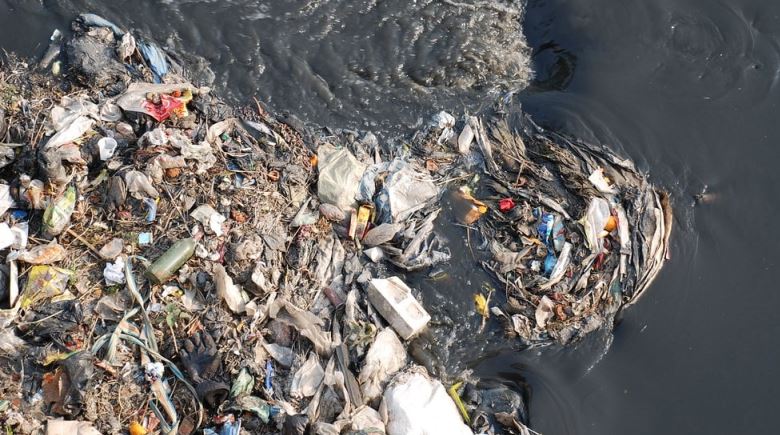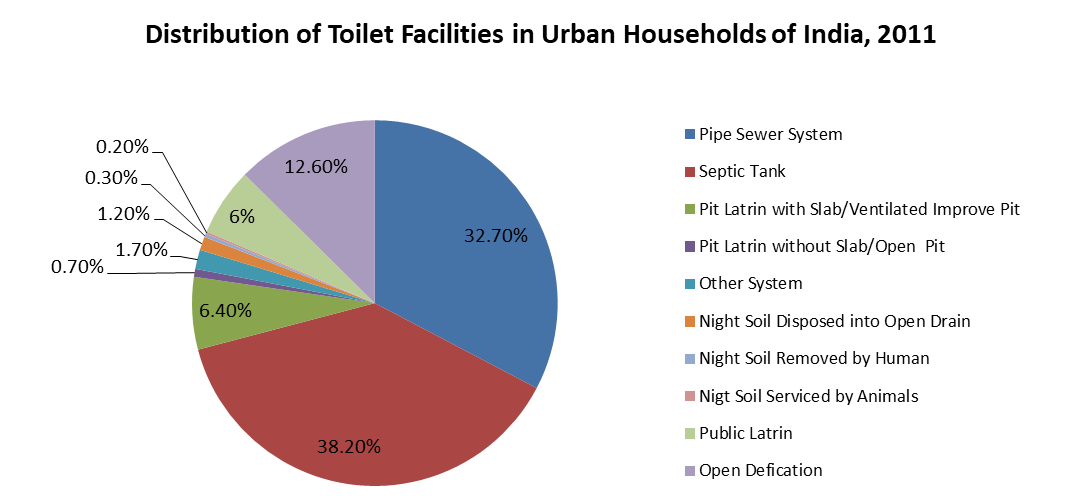Urban Sanitation
‘Sanitation’ refers back to the safe management and disposal of human excreta. It is very important to perceive that this involves service delivery, not simply the set up of infrastructure; each service suppliers and customers must act in outlined methods. This means the success of sanitation investments can’t be measured solely by way of bodily outputs such because the variety of bathrooms constructed or kilometers of sewer laid. As an alternative, the main target of consideration ought to be on outcomes, primarily the use and upkeep of these services.

Urban sanitation protection in quickly urbanizing developing areas has elevated solely barely during the last 20 years, and the number of people without access to improved sanitation has grown 35 p.c, to 684 million people.
A lot of the world’s population is in dire want of improved sanitation, but it surely stays a neglected priority. The United Nations Millennium Growth Targets embrace a worldwide goal of a 75% enhancement in sanitation protection by 2015, however, with present progress rates, this target is one of the most inaccessible. Currently, 2.5 billion people wouldn’t have entry to improved sanitation worldwide, and practically 1.1 billion resort to open defecation, it has risen from 14 million to 25 million in Sub-Saharan Africa and has fallen solely barely in Southeast Asia, from 19 million to 17 million people (UN-Habitat 2010).
Open defecation poses significant health and environmental dangers. Every year, 1.5 million youngsters die from diarrheal illness, and in India, diarrhea kills one child per minute. Open defecation additionally creates vulnerability, notably for ladies and ladies who expertise a lack of dignity or are uncovered to abuse and harassment whereas defecating within the open. Improper waste administration can critically contaminate vital sources of consuming water equivalent to floor and groundwater and discourage tourism and financial growth.
Urban Sanitation: What are the Challenges?
Broadly talking, the challenges fall into 4 classes:
- Low infrastructure;
- Service protection;
- Low service utilization;
- Weak institutional preparations.
Urban Sanitation in India:
Whereas the considerations of urban water and sanitation are confronted in lots of nations within the world South, the size of gaps in entry and companies in India poses a dilemma. In response to the 2011 census, India has a complete population of 1.21 billion, which is an addition of 181 million folks throughout the decade of 2001–2011 (Census of India, 2011b). Although only 31.16 percent of India is urban according to the Census of India, at 377 million, India’s present city inhabitants are larger than the entire population of the United States which is the third most populous nation on the planet. As current commentators have highlighted, if India fails to fulfill its MDG or the rising SDG targets, the worldwide targets wouldn’t be met.
India is a primary instance of the worldwide sanitation problem; practically 60% of the world’s open defecation happens in India. Rural sanitation in India has obtained significantly extra consideration and funding than city sanitation, but the well being, environmental, and aesthetic penalties of poor sanitation in city areas are notably massive, given area constraints and inhabitants density. Furthermore, though Indian cities have developed into engines of financial progress, India’s prospects for long-term prosperity are hindered by its lack of ability to offer fundamental companies.
Research by the World Financial institution’s Water and Sanitation Program (WSP)three estimated that India’s lack of sanitation protection price the nation an equal of 6.4% of its 2006 gross home product. Rising poverty and earnings inequality in city areas have compounded the sanitation downside, and plenty of Indian mega-cities have very massive slum populations. In Mumbai, India’s largest metropolis, 57% of town’s inhabitants lives in slums, Four and nationally, the 2011 Indian census reveals one in six Indians lives in an urban slum. In response to the Ministry of City Growth (MoUD), in notified slums (slums registered by the municipality), 17% of the inhabitants are without entry to improved sanitation, and in non-notified slums, the typical is 51%.
It’s estimated that 75–80% of water air pollution by quantity is from home sewerage. Solely 160 out of practically 8,000 cities have each sewerage method and a sewage therapy plant, and solely 13% of piped sewerage is at present handling.7 Moreover, therapy capability is very uneven, with 40% of India’s whole therapy capability situated in simply two cities—Delhi and Mumbai.7 Even when there are sewerage networks, a lot of the waste fails to succeed in wastewater therapy vegetation.

Figure: Distribution of Restroom Facilities in Urban Households of India, 2011
Source: Census 2011
The table represents the distribution of urban households, according to the kind of toilet facility (Census of India, 2011). Around 81 percent of urban households have entry to toilet services inside the family premises, 6 percent entry public toilets, and 12 percent are compelled to resort to open defecation. Thus, nearly 10 million households nonetheless defecate within the open. Open defecation, and the shortage of entry to any type of toilet facilities, individual or shared, is, without doubt, one of the biggest concerns and challenges for urban sanitation in India.
Also read: World Wildlife Day 2020 and Theme
URBAN SANITATION STATUS IN INDIA
| Year | Population India (millions) |
% of Urban Population |
Improved | Shared | Unimproved | Open Defecation |
| 1990 | 862 | 26% | 49% | 19% | 4% | 28% |
| 2000 | 1042 | 28% | 52% | 20% | 6% | 22% |
| 2008 | 1181 | 29% | 54% | 21% | 7% | 18% |
| 2011 | 1210 | 31% | 77% | 6% | 4% | 13% |
Table: Access to Improved Urban Sanitation (MDG and Census of India)
Source: JMP, Census 2001, Census 2011
The share of households with entry to ‘improved’ sanitation over the previous twenty years. Entry to improved sanitation has elevated over the previous twenty years (from 49 percent in 1990 to 77 percent in 2011). Whereas the proportion of households without entry to ‘fundamental sanitation’ has decreased from 32 percent to 17 percent over the identical size of time, the variety of households practicing open defecation or having unimproved bathrooms has reduced from 72 million to 64 million.
| State | No of HH | Share of HH in Total Urban HH |
No of OD HH | Share of OD HH |
| Maharashtra | 10,813,928 | 14% | 831,668 | 8% |
| Tamil Nadu | 8,929,104 | 11% | 1,447,304 | 15% |
| Uttar Pradesh | 7,449,195 | 9% | 1,104,162 | 11% |
| Andhra Pradesh | 6,778,225 | 9% | 807,518 | 8% |
| West Bengal | 6,350,113 | 8% | 714,459 | 7% |
| The whole of Above States | 40,320,565 | 51% | 4,905,111 | 49% |
Table: Distribution of Urban and OD Households in States with Highest Urban population
Source: Census of India 2011
An analysis of open defecation households throughout varied states in India reveals a sample just like class-wise evaluation. Whereas the eastern and central states of Chhattisgarh, OrissaJ, harkhand, Bihar and Madhya Pradesh have a big share of their city inhabitants defecating within the open, they account for a small proportion of the total numbers defecating within the open. However, the highest 5 states with the very best city inhabitants account for nearly 50 percent of OD city households, as will be seen within the desk under.
URBAN SANITATION CHALLENGES:
- India’s urban inhabitants to extend from 377 million in 2011 to 600 million in 2031
- Growing peripheral expansion of many cities and cities (HPEC, 2011 and World Bank 2011), the place there can be a huge demand for urban companies.
- Phenomenal enhance of two,774 new “census towns” – larger than the variety of such new towns recognized in the entire 20th century.
- A massive proportion of inhabitants in slums – about 94 million
The sewerage systems, the place they exist, are tormented by a number of issues. The sewers in most Indian cities are badly maintained: frequent blockages, siltation, lacking manhole covers, gulley pits. There may be hardly any preventive upkeep with repairs being made solely within the case of crises (WSP-TARU, 2008). Improper disposal of strong waste additionally tends to dam sewer strains. Typically, stormwater enters the sewerage community, resulting in an inflow in extra of the capability of the system, and therefore sewer strains can’t perform. In lots of Indian cities, sewers don’t take wastewater to therapy vegetation, and as an alternative discharge untreated wastes into floor water our bodies.
